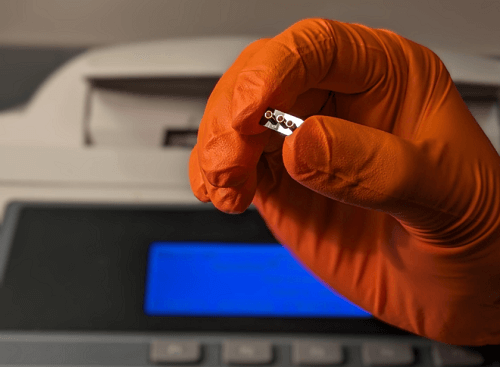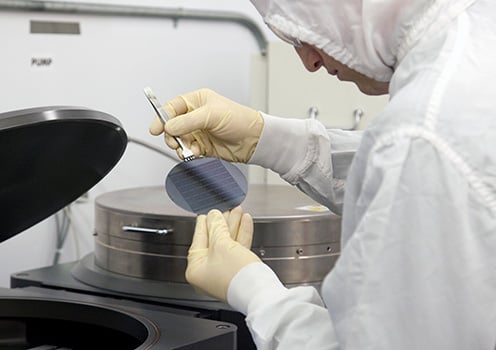Since 2019, many have become accustomed to a swab up the nose to test for COVID-19, using either at-home rapid antigen tests or the more accurate, though longer-to-process, PCR tests commonly provided by clinics. Bridging speed and accuracy, a diagnostic tool developed by researchers at the University of California, Santa Cruz (UCSC) and Brigham Young University (BYU) tests for COVID-19 and Zika virus in a matter of hours with the same or better accuracy as high-precision PCR tests.
The researcher's lab-on-a-chip diagnostics system combines optofluidics and nanopore technology. Stemming from their success in tests on animal models, the collaborating researchers believe that the technology could be an innovation for the future of rapid diagnostics beyond the two diseases initially trialed.

A nanopore optofluidic chip is designed to test for Zika and COVID-19 viruses in a smaller package than traditional PCR testing systems, while also being more accurate. Courtesy of UCSC/Mohammad Julker Neyen Sampad.
While PCR testing is currently considered the gold standard of accuracy for virology testing, these tests are highly complex and require chemical reactions that must be performed by skilled operators, typically at a central laboratory. These complex reactions are needed for the amplification of viral DNA or RNA, a process of making multiple copies of the genetic material that can introduce and amplify errors. Ultimately, it may take days for results to be returned.
Also, PCR tests can only detect nucleic acids, the material that makes up DNA and RNA. But in the case of some diseases, it can be incredibly useful to detect other biomarkers such as proteins.
The UCSC/BYU diagnostic tool requires little sample preparation and is completely amplification-free. It is also label-free, dramatically cutting the time and complexity of the diagnosis process.
For this study, the researchers used biofluids including saliva and blood from baboons and marmosets at Texas Biomedical Research Institute. To run the test, a sample of biofluid is mixed in a container with magnetic microbeads. The microbeads are designed with a matching RNA sequence to the disease for which the test is designed to detect. If a virus is present in the sample, the virus's RNA will bind to the beads.
After a brief waiting period, the testers pulls the magnetic beads down to the bottom of the container and washes everything else out. The beads are put into a silicon microfluidics chip, designed and fabricated by the BYU researchers, where they flow through a channel covered by an ultra-thin membrane. The beads get caught in a light beam that pushes them against a wall in the channel, which contains a nanopore, an opening just 20 nm across. For comparison, a human hair is about 80,000 - 100,000 nm wide.
The testers then apply heat to the chip, which makes the RNA particles come off the beads and get sucked into the nanopore, which detects that the virus RNA is present.

The microfluidics chip in the BYU cleanroom. Biofluid is mixed with magnetic microbeads with the RNA sequence of the virus to-be detected and placed onto the chip in the operation of the UCSC/BYU platform. Courtesy of BYU/Mark Philbrick.
According to the researchers, an approach that combines the low-complexity of label- and amplification-free sensing with such a low limit of detection and wide dynamic range in a portable lab-on-chip format has not previously been demonstrated in clinical samples. "Direct single-molecule detection with integrated electrical nanopore sensors can meet this need," the researchers said, in the research paper.
If their concept is brought to market as a product, the researchers believe its compact size could easily fit in a researcher’s lab, enabling much faster results for virology testing, increasing testing accessibility, and speeding up the time to results from days to hours. In addition, the researchers believe that they could adjust their platform to find any virus for which they have a genetic sample. They plan to further simplify and miniaturize the system, and aim to enable it to test for multiple types of disease at once, a feature called disease multiplexing.
The research was published in Proceedings of the National Academy of Sciences (www.doi.org/10.1073/pnas.2400203121).